#janácek
Explore tagged Tumblr posts
Video
youtube
Leoš Janácek: Idyll Suite for String Orchestra
A short excerpt from our January 26 concert.Leoš Janácek: Idyll Suite for String OrchestraII. AllegroSinfonia Toronto / Nurhan Arman, ConductorJanuary 26, 2024, Jeanne Lamon Concert Hall at Trinity St-Paul's Centre, Toronto.https://youtu.be/6-eb0TPBIWc
3 notes
·
View notes
Photo

Çello & Piyano Resitali
Doğuş Ergin & Ezgi Demirel
4 Aralık 2023 Pazartesi, 20:00 CSO Mavi Salon
Janácek | Pohádka “Masal”
Şostakoviç | Çello-Piyano Sonatı Op.40
Britten | Çello-Piyano Sonatı Op.65
3 notes
·
View notes
Text
Llega "Josefina" al Teatro Santa Isabel
Llega "Josefina" al Teatro Santa Isabel https://ift.tt/8tHD1F4 Basada en la historia real entre Miguel Hernández y Josefina Manresa “Josefina”, escrita y dirigida por Oriol Pàmies y protagonizada por Natalia Zamora llega al Teatro Infanta Isabel a partir del 20 de abril. La pieza teatral se podrá disfrutar en la sesión de las 17.00hrs los días 20 de abril, 4, 11, 18 de mayo y 1 de junio. “Josefina” es un proyecto original donde se entrelazan monólogos, música, danza y la poesía de Miguel Hernández. Una mirada contemporánea a la memoria historica de la España reciente basada en la historia real entre el poeta y dramaturgo, vital en la literatura española Miguel Hernández y su pareja Josefina Manresa. La obra plantea un diálogo entre actriz y personaje. La mezcla de estos dos códigos pretende responder a la pregunta ¿cómo se construye un legado? SINOPSIS Josefina es un puchero alicantino a fuego lento, es más maja que la mar salá y está loca de atar y de remate hablando sola con una voz que le persigue, su Miguel. Una oportunidad de conocer a uno de los personajes que nunca fueron protagonistas y guardan sus recuerdos en cajitas de galletas. Josefina es una reflexión sobre la memoria histórica de España y un diálogo entre pasado y presente en nuestra cultura. Lucía Izquierdo, heredera de Miguel Hernández y nuera del poeta nos comenta sobre la obra: “Estamos muy contentos de que Oriol se haya interesado por la vida de Josefina, persona que tanto significo en nuestra vida y que quisimos con todo nuestro corazón. Sabemos que lo va a hacer muy bien y que va a respetar íntegramente su memoria. Adelante con la obra, le deseamos muchísimo éxito. Es una obra que trata con mucha sensibilidad, cariño y rigor la historia de Josefina Manresa quien luchó incansablemente para proteger el legado de Miguel Hernández. Es un proyecto muy bonito y necesario en este año 2025 que se cumplen 50 años del inicio de la democracia española”. Biografía de Oriol Pàmies: Oriol Pàmies, (1996, Alicante) presenta su tercera creación escénica con Josefina. Artista polifacético, trabaja con compañías como Katsuko y Cía., Islandia como actor, con Dimensión Vocal y Natari producciones como iluminador e interpretando sus propios textos como Forzar el azar o ¿La vida es sueño? Es Máster en Pensamiento y Creación escénica por la ESADCyL; Doble grado en Dirección escénica e Interpretación por la ESAD Murcia y Grado profesional de Violín por el Conservatorio de Alicante. Biografía Natalia Zamora: Graduada en Interpretación de Creación por la ESAD Murcia y Enseñanzas Artísticas Superiores en la Janácek Academy of Music and Performing Arts in Brno. Se ha formado con diferentes profesionales como Concha Esteve, Pierre Nadaud, Gabriel Almagro, Lily Kiara, Victoria Di Pace, Lautaro Perotti o Matej Matejka entre otros. Formada en Danza Contemporánea en el Conservatorio de Danza de Murcia y en flamenco con José Soriano, Daniel Valera, Carmen la Talegona, Olga Pericet o Daniel Doña. Ha trabajado como actriz en proyectos teatrales como “Prensa, luego exista”, “Narc is so loved”, “Norte” (versión libre de Hamlet), “The Ceremony”, “Bambi, príncipe del bosque. El musical”, “, “A los muertos no se les da besos”, “La tonta del Bote. El musical” o “When are we”. Actualmente trabaja en el monólogo teatral “Josefina”, en el western contemporáneo “5 hermanas” y en la obra a ciegas “Mi vida gira alrededor de 500m”. En cine y televisión ha trabajado como actriz en las series de Atresplayer “La Ruta” y “Mar Afuera” (pendiente de estreno) en la serie de Apple Tv “En tierra de mujeres” y en la película de TVE “El Rey Peret”. Información ”Josefina” Texto y dirección escénica: Oriol Pàmies. Interpretación y co-creación: Natalia Zamora. Duración de la obra: 60 minutos. via Escena https://ift.tt/9flKhuV April 19, 2025 at 10:22PM
0 notes
Text
Tuesday Rhapsodies - Leoš Janácek
It’s been a while since I did Tuesday Rhapsodies. I freely admit that it was because I was scraping the barrel and was having trouble finding new ones. Just by sheer luck, I found that since my last search, Wikipedia had started a new list along with the main article. In the process, I found two new ones! The first was Taras Bulba by Czech composer Leoš Janá?ek. If I ever heard of it before, I…
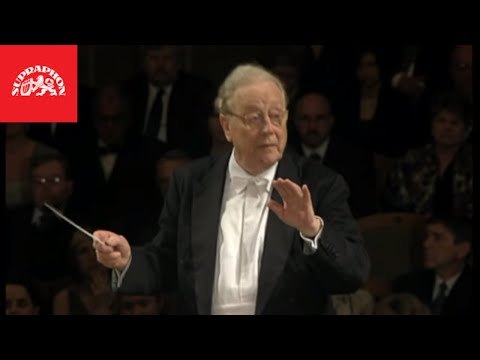
View On WordPress
0 notes
Video
youtube
Piano Sonatas: Discoveries | Griffes, Janácek & Enescu
0 notes
Text
totally and though i know i'm not the imagined audience lol i'm actually among those who have never really listened to Honegger, Janácek, that particular Schoenberg, or Hamasyan... so thanks!
in the list I'm imagining i'm mostly trying to stick to pieces that deliberately pose an aesthetic challenge to the listener but: what do we think? Increasingly I think that works like the Chopin Barcarolle, or even the 1st movement of the Borodin quartet, really, if they were forced to really listen, would be too much musical flavor for your average whitebread tumblr user
17 notes
·
View notes
Video
Janácek: Concertino for Clarinet, Bassoon, Horn, Two Violins, Viola, and Piano
Tommaso Lonquich - clarinet, Peter Kolkay - bassoon, Stewart Rose - horn, Aaron Boyd - violin, Bella Hristova - violin, Paul Neubauer - violin, Anne-Marie McDermott - piano
Recorded live in Alice Tully Hall on May 20, 2018.Video produced by Ibis Productions.
2 notes
·
View notes
Text
Canciones desde el Ártico

[Leif Ove Andsnes y Lise Davidsen han grabado para Decca canciones de Grieg / MORTEN KROGVOLD]
La soprano noruega Lise Davidsen publica su tercer álbum en Decca, un recital de canciones de Grieg
Empezó a destacar en 2015, cuando se impuso en algunos de los más importantes certámenes líricos internacionales (Operalia, incluido) y hoy es ya la wagneriana del momento. Algunos incluso van más lejos y ven en ella a una Isolda y una Brühnnilde que puede marcar época. Pero la noruega Lise Davidsen (Stokke, 1987), una soprano spinto en lo que parece un imparable crecimiento hacia las tonalidades más oscuras y profundas de su registro, va más despacio y aún no contempla incorporar los grandes papeles dramáticos de Wagner.
Al oírla, algunos han invocado el recuerdo de la legendaria Kirsten Flagstad, noruega como Davidsen y una de las más extraordinarias wagnerianas de la historia. Pero hay comparaciones que pueden resultar castradoras, y a la joven nórdica aún le queda casi todo por hacer. El peso del compositor alemán es, en cualquier caso, esencial en su carrera desde que debutó en 2019 en Bayreuth con Elisabeth de Tannhäuser, unas funciones que le procuraron elogios unánimes de la prensa mundial. En 2021 repitió desempeño y añadió el papel de Sieglinde en La Valquiria, que volverá a ofrecer este verano (antes lo presentará también en Viena y Hamburgo). El pasado otoño hizo su debut como Eva en Los maestros cantores de Núremberg en el Metropolitan de Nueva York, un teatro al que volverá en marzo y abril para dos grandes papeles straussianos, el protagonista principal de Ariadne auf Naxos y Chrisotemis de Elektra.

Pero Davidsen apunta también a otros territorios. En Viena canta a finales de enero el rol de Ellen en Peter Grimes de Britten y ha hecho ya incursiones en Chaikovski, Janácek e incluso la ópera italiana. Además, el lied es desde el principio materia irrenunciable de su actividad artística, tanto en concierto como en disco. Con un recital de lied estuvo el año pasado en Valencia y hace unos días así se ha presentado en el Teatro Real de Madrid acompañada por Leif Ove Andsnes (Karmøy, 1970), el gran pianista noruego de las últimas décadas, con quien acaba de publicar su último álbum, un monográfico dedicado a canciones del más célebre compositor noruego de la historia, Edvard Grieg (1843-1907). El recital fue grabado por Decca en la ciudad noruega de Bodø, en el Círculo Polar Ártico, y recoge un total de 28 canciones, entre las que se cuentan tres ciclos completos, dos de los cuales incluyó también en su concierto madrileño.
Davidsen sabía que afrontar este repertorio resultaba ineludible para ella, pero también que suponía una responsabilidad dentro de su país: "Todo el mundo en Noruega conoce esta música. Soy muy consciente de las convenciones referentes a cómo debería hacerse y quién debería interpretarla. Este proyecto consistía en escuchar la música por sí misma, intentando encontrar nuestro sonido Grieg”.
Conocido muy especialmente por su música incidental para el Peer Gynt de Ibsen y por uno de los más populares conciertos para piano de todo el repertorio, Edvard Grieg destacó sobre todo en la música más íntima, especialmente en la pianística (justamente celebrados son sus diez cuadernos de Piezas líricas) y en las canciones.

[Lise Davidsen y Leif Ove Andsnes el pasado 8 de enero en el Teatro Real de Madrid / JAVIER DEL REAL]
Instalado en Copenhague en 1863, Grieg había conocido allí a su prima Nina Hagerup, una talentosa cantante con la que se comprometió en 1864 y se casó tres años después. Nina es la inspiración de toda su carrera de compositor de canciones: “¿Cómo es que mis canciones juegan un papel tan importante en mi producción? Simplemente debido a que incluso yo, como otros mortales, por una vez en mi vida, estaba dotado de genio (por citar a Goethe). El destello del genio fue el amor. Amaba a una joven que tenía una voz maravillosa y un don para la interpretación igualmente maravilloso. Esa niña se convirtió en mi esposa y mi compañera de toda la vida hasta el día de hoy. Para mí, ella ha sido, me atrevo a admitirlo, la única intérprete genuina de mis canciones”, escribió a Henry Finck, su biógrafo americano, en 1900.
Nos han quedado 170 canciones de Grieg, la mayoría de ellas agrupadas en más de veinte colecciones. El álbum de Davidsen y Andsnes se abre posiblemente con la más querida por su autor, Haugtussa Op.67 (1898), ocho piezas sobre poemas de Arne Garborg escritos en nynorsk, una alternativa al noruego oficial, que venía de la época en que el país estaba unido a Dinamarca. También se incluyen las 6 canciones alemanas Op.48, compilación publicada en Leipzig en 1889 y que conecta al noruego con el romanticismo alemán, y ello a pesar de que su paso por el Conservatorio de Leipzig no resultó muy agradable para el músico, aunque le permitió un acercamiento decisivo a Schumann, cuyo recuerdo era aún muy reciente en la ciudad. La tercera colección que se ofrece completa son las 5 canciones Op.69 (1900), escritas sobre poemas de Otto Benzon, que sería también el autor de los poemas de su última colección, publicada aquel mismo año.
La seductora carnosidad del timbre de Davidsen, la densidad de su voz, la combinación entre la oscura profundidad de su registro grave y la gracia aérea de los agudos hacen maravillas en un repertorio que exige también ductilidad, tersura, capacidad para el repliegue más íntimo, y todo ello escuchará el aficionado en un disco por completo deslumbrante. No es ajeno a ello el pianismo refinado y matizadísimo de Andsnes.
Más allá de Wagner
El debut discográfico de Lise Davidsen se produjo en 2016 con un álbum en el sello danés Da Capo dedicado a canciones del danés John Frandsen y otro con la Oslo Sinfonietta publicado por el sello noruego Bis con música contemporánea variada. En ambos casos, Davidsen se integraba en un conjunto de solistas más amplio. En 2018 participó también en la grabación de la música incidental completa para Peer Gynt que hizo la Filarmónica de Bergen con el director Edward Gardner para el sello Chandos. En 2021, los mismos intérpretes y sello volvían a publicar un registro que incluía la voz de la soprano noruega en Luonnotar y Pelleás y Mélisande de Sibelius.
En 2019 Davidsen participó también en la grabación de Der Freischütz de Weber que publicó el sello holandés Pentatone con la Orquesta Sinfónica de la Radio de Frankfurt y la batuta de Marek Janowski. Dos años después, Pentatone y Janowski publicaron igualmente un Fidelio de Beethoven, que incluye la Leonora de la soprano noruega.
El debut en el sello Decca data también de 2019 e incluía canciones de Strauss (los 4 últimos lieder y las cuatro canciones de la Op.27, entre ellas) y arias de Ariadne auf Naxos y de Tannhäuser de Wagner. Los Wesendonck-lieder del compositor alemán figuraban como principal atractivo del segundo álbum publicado en Decca, que salió al mercado en la primavera de 2021, y que se complementaba con la gran aria de Leonora en Fidelio y la escena lírica Ah, perfido de Beethoven, además de arias de la Medea de Cherubini, Cavalleria rusticana de Mascagni y La forza del destino y Otello de Verdi. Acompañaba la Filarmónica de Londres dirigida por Mark Elder. 2022 ha empezado con el intimismo de Grieg. Continuará...
[Diario de Sevilla. 17-01-2022]
EL CD EN SPOTIFY
#lise davidsen#leif ove andsnes#edvard grieg#decca#richard wagner#kirsten flagstad#chaikovski#janácek#beethoven#verdi#cherubini#mascagni#richard strauss#john frandsen#carl maria von weber#jean sibelius#nina hagerup#música#music#Spotify
0 notes
Text
Watch "Leoš Janácek: Idyll Suite for String Orchestra" on YouTube
youtube
Happy birthday Leoš Janácek!
Leoš Janácek: Idyll Suite for String Orchestra
II. Allegro
Sinfonia Toronto / Nurhan Arman, Conductor
January 26, 2024, Jeanne Lamon Concert Hall at Trinity St-Paul's Centre, Toronto. https://youtu.be/6-eb0TPBIWc
#orchestra#symphony#classical music#toronto#ontario#violin#music#chamber music#classicalmusic#Youtube
1 note
·
View note
Photo










Morgiana (Juraj Herz, 1972).
#morgiana (1972)#juraj herz#iva janzurová#nina divísková#jaroslav kucera#jaromír janácek#zbynek hloch#jiri rulik#irena greifová#morgiana#ladislav bacílek
769 notes
·
View notes
Text
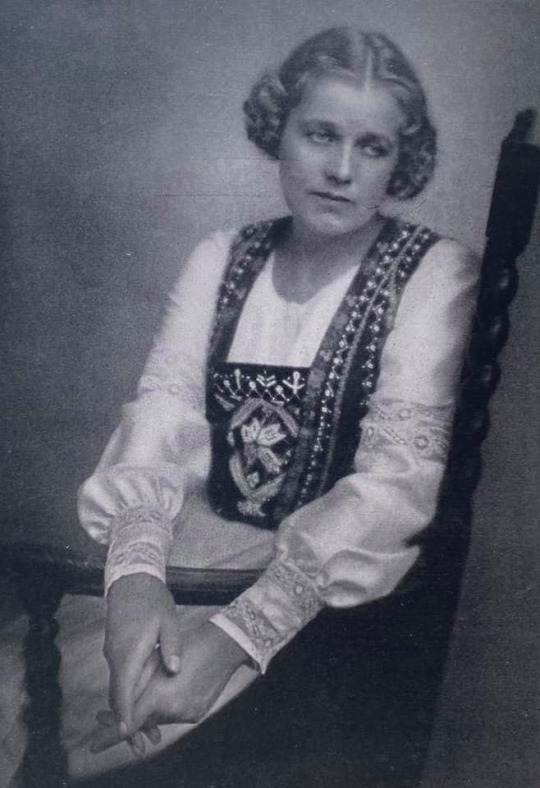
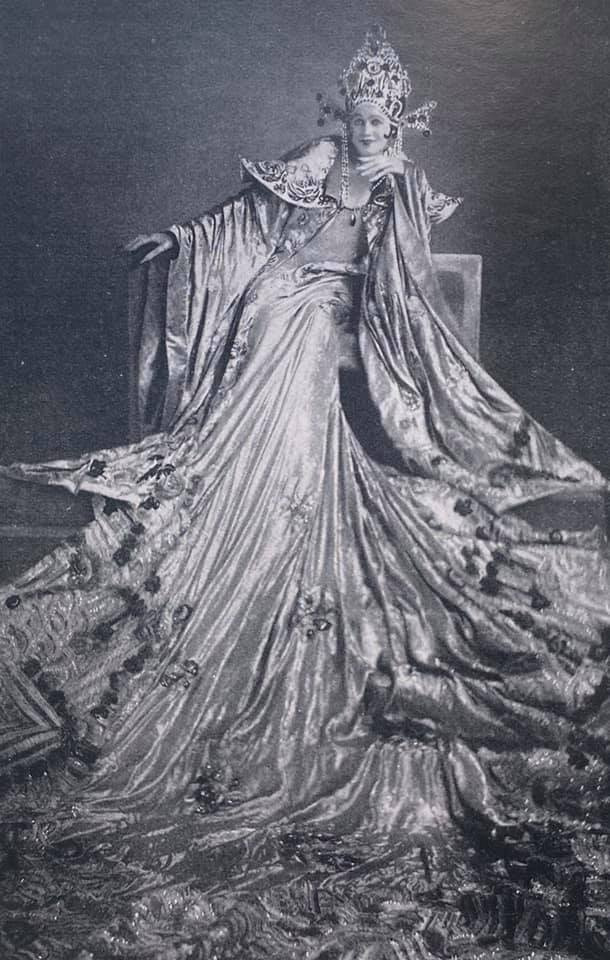
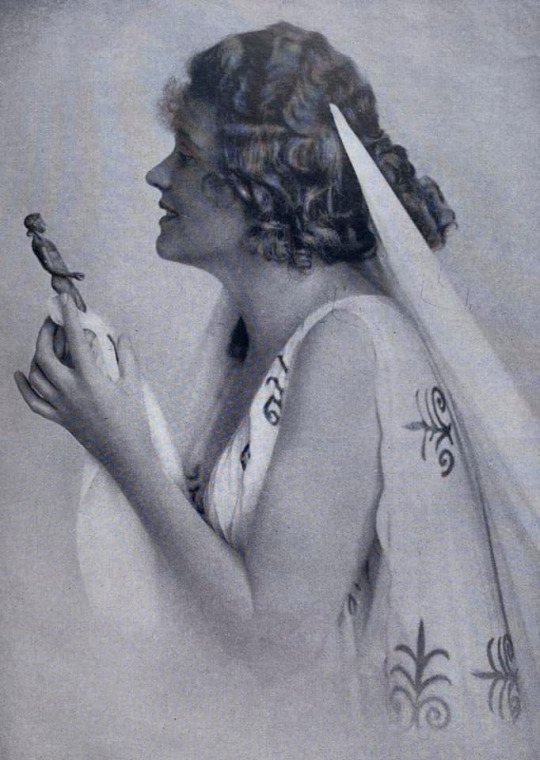
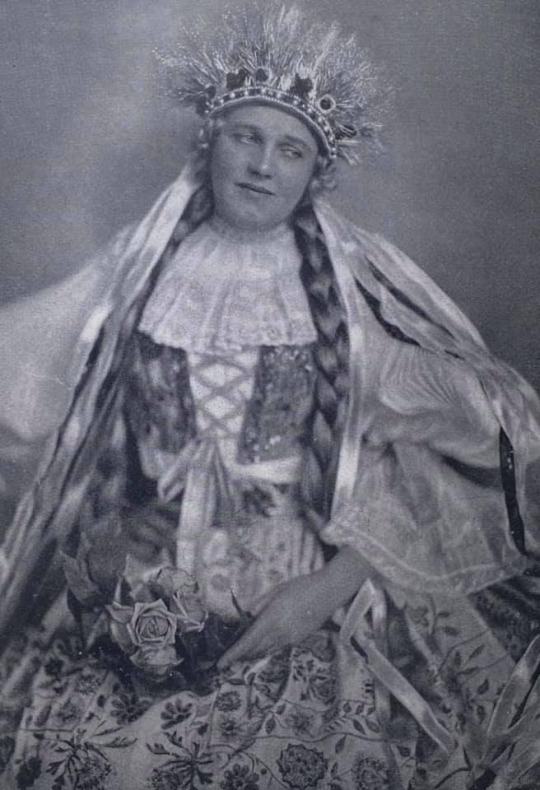
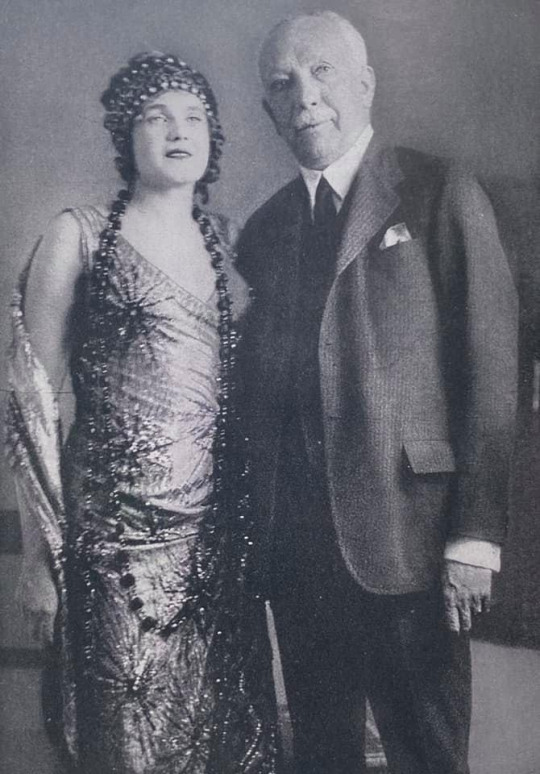

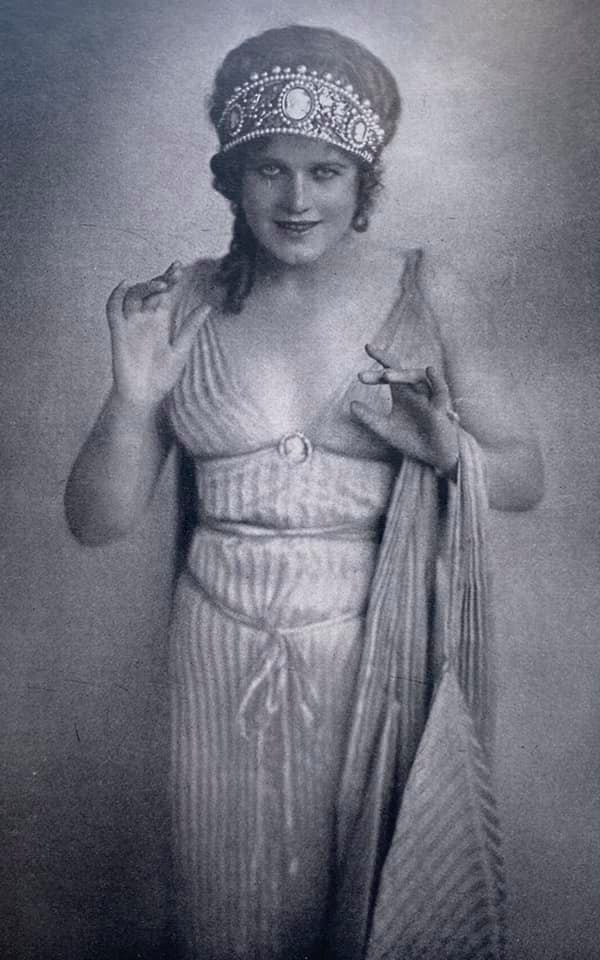
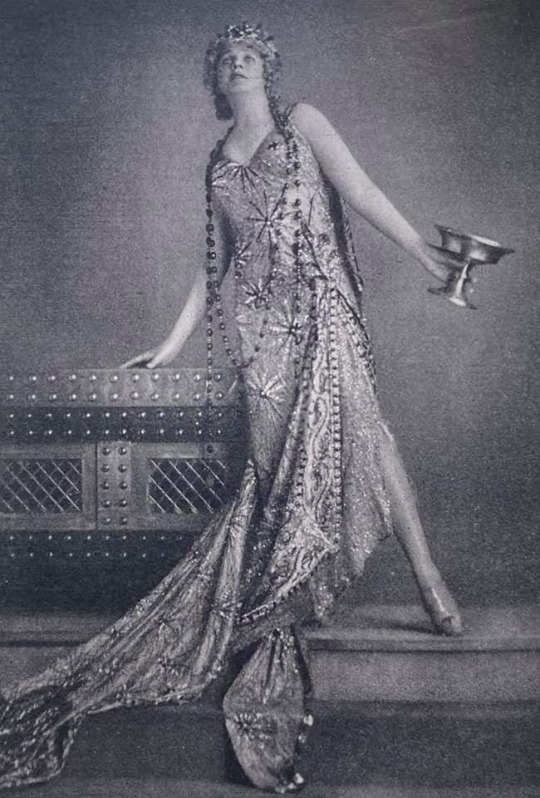
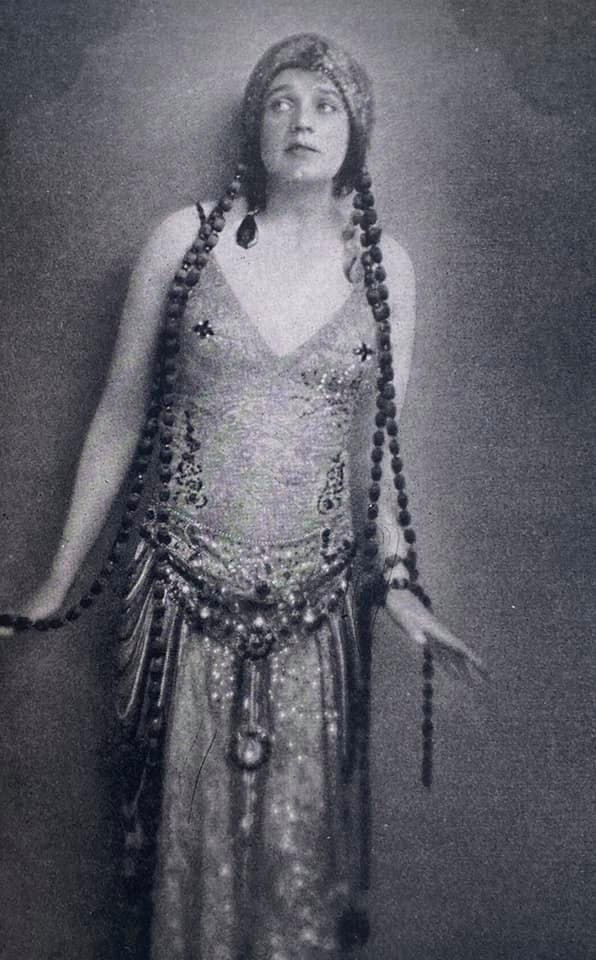
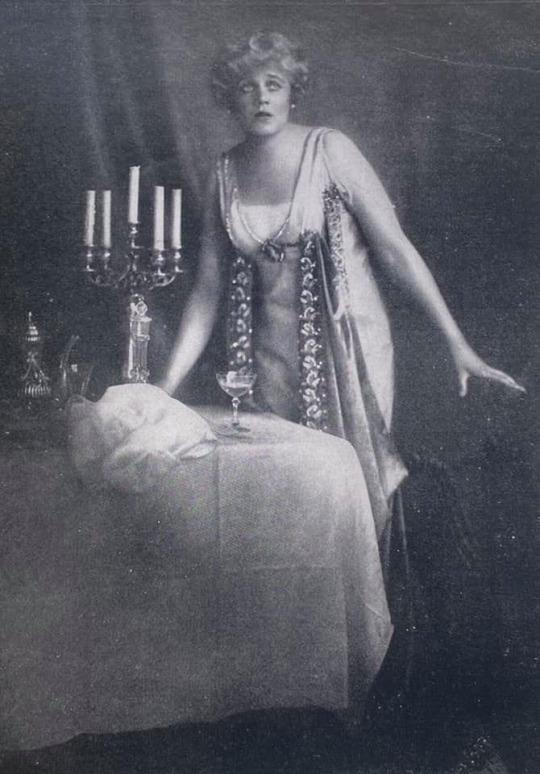
The flamboyant soprano Maria Jeritza, born in Moravia, made her early career primarily in Vienna, where her exceptional beauty, silvery spinto-weight voice and flair for dramatic (not to say sensational) stage action made her a star of the first magnitude. Baptized Mimi Jedlitzková and later calling herself Marie Jedlitzka, she sang a wide repertory and participated in the premieres of several important operas. Her glamorous presence was as welcome at the Metropolitan Opera as it was in Europe and she became a leading artist there in the 1920s.Surprising though it may seem, given her later theatrics, Jeritza was a very shy child. Beginning her studies at the age of 12, she entered the Brünn Musikschule. At 14, she undertook private lessons from Professor Auspitzer, with whom she remained for several years. Although urged by Auspitzer to audition for a position with a number of regional opera houses, Jeritza refused, too terrified to sing before an audience of any size. Her teacher, therefore, devised a ruse, asking her one day simply to sing through some arias. When she finished, the director of the Olmütz Opera appeared from behind some draperies and informed the startled young soprano that he wished to engage her.Jeritza's Olmütz debut as Elsa in Lohengrin saw the start of a rapid rise in confidence and dramatic savvy. Less than half a year later, she traveled to Vienna to audition for the Volksoper. Singing but a few measures, she was informed that she would be hired. Two seasons at the Volksoper led to guest engagements elsewhere and an appointment to Vienna's Court Opera, especially at the request of Emperor Franz Joseph. Meanwhile, she had created the title role in Stuttgart of Richard Strauss' Ariadne auf Naxos, thus beginning her long-term relationship with the composer who would give her yet another spectacular role, that of the Empress in Die Frau ohne Schatten in its 1919 premiere in Vienna. In both Frau and in the 1916 premiere of the revised Ariadne in Vienna, Jeritza was paired with soprano Lotte Lehmann. Jeritza also created the role of Janácek's Jenufa for Vienna, as she was later to do for New York.Another highly publicized Jeritza creation was the role of Marietta in Erich Korngold's Die Tote Stadt, premiered in Hamburg in 1920 and repeated in New York the following year. This role, in fact, provided the vehicle for Jeritza's Metropolitan debut. During this time, the soprano also achieved renown for her interpretations of Puccini heroines. Her imperious Turandot was hailed as a major accomplishment and her not-quite vulnerable Tosca became exceedingly famous, not least for her singing "Vissi d'arte" from a prone position. Tenor Aureliano Pertile, celebrated in his native Italy as the best of the dramatic tenors, had the misfortune to make his debut opposite Jeritza's first Metropolitan Tosca. Jeritza received what, according to Met manager Giulio Gatti-Casazza's recollection, was the greatest response he had ever witnessed in a theatre. Pertile was all but ignored.Jeritza's successes embraced a wide range of roles, all of them interesting, if sometimes misconceived. Her Octavian in Rosenkavalier was both stunningly handsome and handsomely sung. Her Minnie, Thaïs, Salome, Fedora, and Ägyptische Helena (which she premiered at the Met) were creatures of unending fascination. Although Jeritza left the Met during the Depression years when pay cuts were mandated, she continued to enthrall audiences in Europe throughout the 1930s.
#Maria Jeritza#Metropolitan Opera#Carl Maria von Weber#Der Freischütz#richard wagner#Lohengrin#Die Walküre#Tristan und Isolde#Amilcare Ponchielli#La Gioconda#Cavalleria rusticana#Pietro Mascagni#Tosca#Giacomo Puccini#Richard Strauss#Turandot#Jules Massenet#Thaïs#Carmen#Georges Bizet
4 notes
·
View notes
Link
Janáček composed his piano music around the turn of the 19th and 20th centuries, before he found fame late in life with operas such as ‘Jenůfa’, ‘Káťa Kabanová’ and ‘The Makropulos Case’. Epigrammatic but obsessive, these intimate pieces speak of the composer’s passions and frustrations. But like his later works they are loaded with drama and big ideas.
The first book in ‘On An Overgrown Path’ is notable for its poetic titles – such as ‘Our evenings’, ‘They chattered like swallows’, ‘Unutterable anguish’ – which find expression in music of apparent folk-like innocence and sudden passions, which reach a powerful climax in the violent contrasts of the first book’s final piece, ‘The Barn-Owl has not flown away’. This is music of heartbreak and desolation hardly less moving in its way than the great scenes of love and abandonment which Janáček composed for his operatic heroines.
Stripped of such titles, the second book in ‘On An Overgrown Path’ is more elusive in meaning, swinging between a gentle, Czech translation of Debussy’s Impressionist tone-painting and darker, more sinister currents of expression that run raw and angry in the Sonata which Janáček wrote to commemorate the death of a young man at the hands of the police in Prague during political protests in the autumn of 1905. From seven years later, the four-movement cycle of Mists recovers some of the Romantic melancholy of ‘On an Overgrown Path’, though its cathartic finale presents a stiff challenge to any pianist with its torrents of notes.
As the recipient of a prestigious Borletti-Buitoni award, the Hungarian pianist Zoltán Fejérvári is a solo, concerto and chamber-music pianist with several well-received recordings to his credit such as Liszt’s Malédiction and an album of Mozart violin sonatas in partnership with Ernő Kállai.
This new recording contains the main body of piano music by Czech composer Leos Janáček: the Piano Sonata, the complete cycle On an Overgrown Path and the cycle In The Mists. Janáček’s piano music is highly personal, his language immediately recognizable: short, almost aphoristic motives form the basis of a highly dramatic discourse. The Sonata was written after the death of a man during a worker’s demonstration and expresses a deep and bleak despair. The cycle In The Mists and On An Overgrown Path contain miniatures of sometimes violent, sometimes painfully intimate emotions.
Zoltán Fejérvári is one of the most exciting young pianists to emerge from present day Hungary. A recipient of the Borletti-Buitoni Trust Fellowship and 1rst prize winner of the Montréal Piano Competition he played with the Budapest Festival Orchestra/Iván Fischer, with Zoltán Kocsis, at the Verbier Festival, Washington Library of Congress, Carnegie Weill Hall and many international Music Festivals. He is a member of the “Building Bridges” program of Sir András Schiff.
19 notes
·
View notes
Text
Dagboek van een verdwenene

Het is dag ik-weet-niet-hoeveel van de lockdown. Dat betekent dat we dus nog altijd niet naar buiten kunnen gaan om onze culturele activiteiten te voltooien.
MAAR! Daar is een oplossing voor! Want lang leve het internet. Één klik en je komt op de site van Podium Aan Huis waarop je tal van danstheaters, concerten en opera’s kan vinden.
Zo heb ik bijvoorbeeld de opera genaamd ‘Dagboek van een verdwenene’ gekeken.
Deze liederencyclus is gebaseerd op een serie korte gedichten van Leoš Janáček die al 61 jaar was toen hij het schreef. Het gaat over een boerenjongen die verdwijnt omdat hij een zigeunermeisje achterna gaat op wie hij verliefd is. Er wordt gezegd dat op het moment dat de componist de muziek schreef, hij zelf verliefd was op een onbereikbaar jong meisje. Hij heeft dus als het ware zijn gevoelens van toen omgezet in muziek.
Het Muziektheater Transparant heeft van deze liederencyclus die slechts een halfuur duurde, een kleine opera gemaakt. Dit gebeurde met onder andere de hulp van componist Annelies van Parys en dramaturg Krystian Lada. Het was regisseur Ivo van Hove en zijn vormgever Jan Versweyveld die het verhaal uit de folklore wilden halen. Dit is duidelijk zichtbaar aan het decor want er is geen boerse sfeer. Integendeel, het decor moet een stadse kamer voorstellen. Ook de boerenjongen wordt anders weergegeven, namelijk als een fotograaf en het zigeunermeisje als zijn assistente.
De rol van de fotograaf wordt maar liefst door 2 verschillende mensen vertolkt. Zo heb je de oudere versie van de fotograaf (gespeeld door Hugo Koolschijn) en de jongere versie (gespeeld door Ed Lyon). Op die manier wordt de fotograaf weergegeven als iemand die letterlijk leeft tussen beelden van vroeger. Je ziet een man die verdwaalt in zijn eigen geheugen, die heen en weer loopt tussen feiten en niet vervulde verlangens. Ook door het personage te splitsen in een zanger en een acteur wordt ervoor gezorgd dat waarheid en verzinsel, en heden en verleden door elkaar gaan lopen. Deze interactie tussen de oude en de jonge versie van de fotograaf was iets dat me gedurende het hele stuk erg intrigeerde en nieuwsgierig maakte.
Het vrouwelijke personage wordt vertolkt door Marie Hamard, een mezzosopraan. Zij speelt de assistente van de fotograaf én het zigeunermeisje. Naar mijn mening zette zij zowel op vocaal als op fysiek vlak een hele prestatie neer. Haar handelingen, stem en mimiek deden het plaatje volledig kloppen. En dat terwijl ze maar liefst twee rollen moest voltooien, een bijna onmogelijke taak.
Naast deze drie is ook Lada Valešová op het podium te vinden. Zij speelt tijdens de opera op de piano en geeft zo met haar muziek het stuk een mysterieuze en prachtige touch. De piano is als het ware een volwaardige stem die op cruciale momenten zoals bijvoorbeeld de seksscène, het gebeuren verklankt. Op andere (vanzelfsprekende) momenten valt ze dan weer stil omdat dan de stem van de operazangers al genoeg is om het hele gebeuren op een duidelijke en mooie manier weer te geven.
Niet te vergeten is ook het vrouwelijke trio Trees Beckwé, Isabelle Jacques en Raphaële Nsunda Nluti. Zij blijven weliswaar gedurende het hele stuk achter het decor, maar zijn door hun prachtige gezang niet onopmerkelijk.

Op de site genaamd www.transparant.be las ik volgende recensie:
‘De dramaturgische en scenische ingrepen van regisseur Ivo Van Hove, scenograaf Jan Versweyveld en dramaturg Krystian Lada, de prachtige stemmen van de solisten en de boeiende uitvoering van de muziek van Janácek en van Annelies Van Parys, zorgden voor een geslaagde voorstelling van hedendaags en dramatisch geladen muziektheater, zowel op inhoudelijk en scenisch als op vocaal en muzikaal vlak.’ (Toon Brouwers - Forum - Lente 2018)
Ik ben het helemaal eens met deze recensie. Alles bij elkaar, zowel het decor, de zang en de muziek zorgde ervoor dat het stuk heel goed tot zijn recht kwam. Het vormde allemaal een heel mooi geheel. Wat mij betreft is dit dus zeker een aanrader voor de operaliefhebbers!
1 note
·
View note
Audio
current mood
#the ‘4 AM and I can’t fall asleep again’ mood#spotify opera mood#jenufa#leos janacek#janacek#opera#opera tag#I love this aria to death#now I actually just need to watch the opera#I know what it’s about but I still need to watch it#so much opera so little time#mamicko mam tezkou hlavu
2 notes
·
View notes
Text
Hafid Bouazza en de dronken diva
Hafid Bouazza en de dronken diva
bron beeld: bladna.nl Het boekje Muziek in mijn leven biedt schrijvers de kans iets te zeggen over de inspirerende werking van klassieke muziek. Daarin verrassenderwijs ook een bijdrage van de onlangs overleden Hafid Bouazza. Zijn bijdrage heet: Dronken diva. Voor zover ik weet is Janácek de enige operacomponist die een dronken vrouw opvoert, en het resultaat is bekoorlijk: vanaf het moment dat…
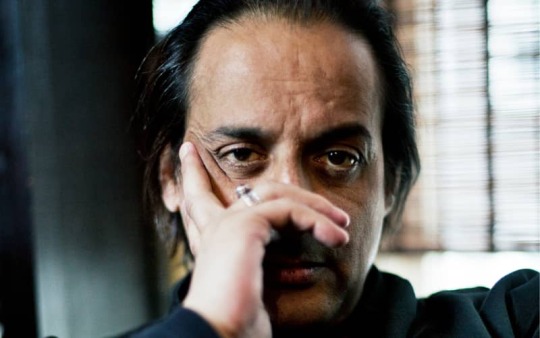
View On WordPress
#20-ste en 21-ste eeuws#Elisabeth Söderström#Janácek#klassieke muziek#Marokko#operacomponist#schrijver#Sir Charles Mackerras#Verdi#Wiener Philaharmoniker
0 notes